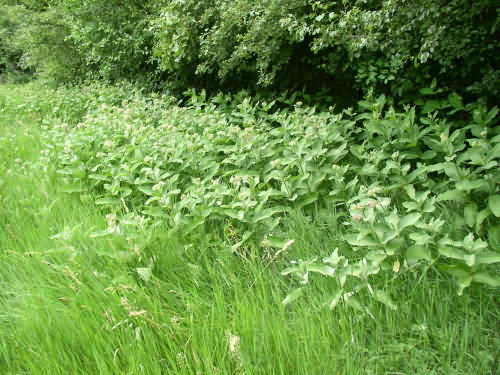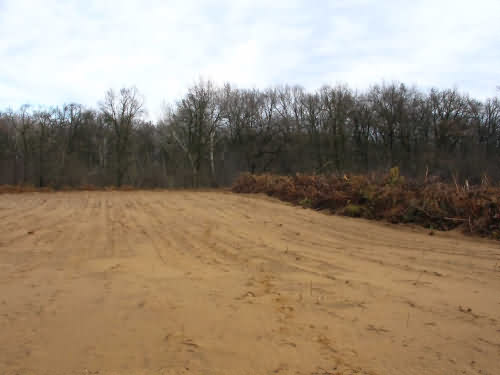Endangering factors and threats
The forests and grasslands, which survived the storms of centuries, are endangered by several factors.
1. Spread of invasive species
 The remaining patches of sand steppe oak woods and Pannonic sand steppes are located among large territories of alien tree plantations, from which alien tree and plant species continuously spread. Very invasive are Black Locust (Robinia pseudo-acacia), Black Cherry (Prunus serotinus), less invasive are Chinese Sumac (Ailanthus glandulosa) and pine trees (Pinus nigra, P. sylvestris). Among the threatening invasive species are herbaceous plants such as Common Milkweed (Asclepias syriaca). The remaining patches of sand steppe oak woods and Pannonic sand steppes are located among large territories of alien tree plantations, from which alien tree and plant species continuously spread. Very invasive are Black Locust (Robinia pseudo-acacia), Black Cherry (Prunus serotinus), less invasive are Chinese Sumac (Ailanthus glandulosa) and pine trees (Pinus nigra, P. sylvestris). Among the threatening invasive species are herbaceous plants such as Common Milkweed (Asclepias syriaca).
The territory covered by invasive species has been growing within the whole of Natura 2000 habitats, they cover an area 15-20% on average. The invasive alien species shade the grassy understorey located underneath, they extract nutritive from the soil and alter soil composition that finally leads to the restructuring of the association, thus the nature conservation status of the habitats of community importance decreases significantly.
2. Decrease of ground water level and/or problems in natural forest regeneration capability due to damage caused by game
At present young, several year old oak trees cannot be found in the oak forests, regardless that a big number of seedlings appear in case of sufficient acorn-crop.
One suspected reason is the decrease of water supply, as a result of water regulations conducted in the last 80 years. It can also be observed on the territory that the overpopulated large game animals cause significant damage by chewing on fresh offshoot and by digging the soil, which can lead to hampering of natural regeneration processes. With the lack of natural regeneration the steppe oak woods will age in thelong term, and the habitat will change with the destruction of old oaks.
3. Forest management practices
 Throughout the whole territory of Nagykőrös woods, the officially approved forest management practice is the intensive technology based on clear-cutting and complete soil preparation. The clear-cutting forest management can lead to the total destruction of Natura 2000 habitats, since it severely damages every storey of vegetation (foliage, scrub, grass). Throughout the whole territory of Nagykőrös woods, the officially approved forest management practice is the intensive technology based on clear-cutting and complete soil preparation. The clear-cutting forest management can lead to the total destruction of Natura 2000 habitats, since it severely damages every storey of vegetation (foliage, scrub, grass).
4. Fragmentation
Within the framework of intense forest management practices plantations of Black Locust, pines and hybrid poplars were created. These alien plantations gradually fragmented and replaced the steppe oak woods, which now appear as remaining small isolated patches. Due to their small extension, the spreading of invasive species is significant, thus the regeneration ability of the forest and the natural dynamics are damaged.
|